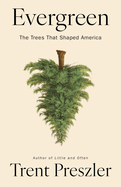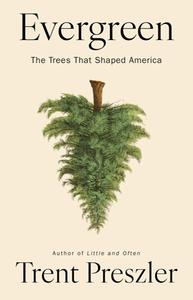
 Trent Preszler (Little and Often), a professor of practice in the Charles H. Dyson School of Applied Economics and Management at Cornell University, offers readers a captivating history of the evergreen (and other trees) and its role in the development of the physical territory and culture of the United States.
Trent Preszler (Little and Often), a professor of practice in the Charles H. Dyson School of Applied Economics and Management at Cornell University, offers readers a captivating history of the evergreen (and other trees) and its role in the development of the physical territory and culture of the United States.
Throughout history, even before the United States existed, lumber was a definitive resource in many aspects of life--including military campaigns from ancient Rome to colonial Britain--and civilizations consumed it as though it were limitless. "When the Western Roman Empire collapsed in the fifth century, southern Europe was mostly deforested, its vibrant landscapes reduced to barren hills and eroded soils."
Evergreen is particularly insightful in its examination of the foundational role of timber in the early United States. For the first colonists, the vast forests were a formidable challenge, as they hindered the development of agriculture lands and transportation of people and goods. Logging was, and remains, a singularly dangerous occupation, which Peszler likens to whaling in its lethalness: "Workers in the industry face odds of being killed on the job more than thirty times greater than the typical American worker." But the forests were also an immense opportunity. The timber trade provided the essential materials for shipbuilding, construction, and the growth of towns. Preszler recounts how the towering white pines of New England became critically important for the masts of the British Royal Navy, a reliance that led to substantial political friction and contributed to the lead-up to the Revolutionary War.
One of the book's most compelling sections is a detailed chronicle of the tree's gradual assimilation and subsequent prominence within the Christian tradition. Preszler lays out the custom's pre-Christian origins in Germanic cultures, where evergreen boughs were venerated during the winter solstice as a symbol of life's endurance. This practice was initially regarded with deep suspicion by many early Christian communities, including the Puritans in America, who condemned them as "pagan mockery." It took a huge influx of German immigrants in the 1800s to popularize the Christmas tree through their sheer numbers. By 1889, the White House set up its first Christmas tree, although there wasn't a Christmas tree in the Vatican until 1982, during the papacy of John Paul II.
Readers of canonical "history through an object" such as Mark Kurlansky's Salt or Coal: A Human History by Barbara Freese will be spellbound by Preszler's narrative skill as he adroitly makes the various historical eras and their forests feel vibrant and alive. --Elizabeth DeNoma, executive editor, DeNoma Literary Services, Seattle, Wash.
Shelf Talker: An in-depth, expansive, and poignant exploration of the history of trees and forestry that makes the reader to see the world in a fresh way.

